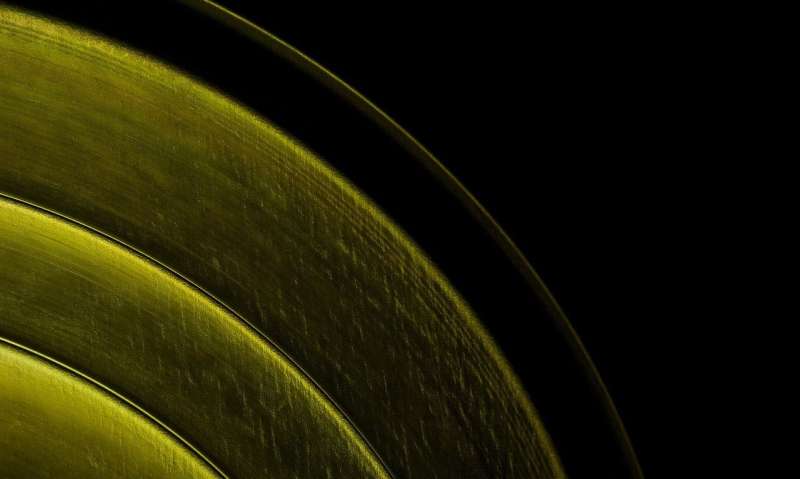New shortcut enables faster creation of spin pattern in magnet

Physicists have discovered a much faster approach to create a pattern of spins in a magnet. This shortcut opens a new chapter in topology research. This discovery also offers an additional method to achieve more efficient magnetic data storage. The research will be published on 5 October in Nature Materials.
Physicists previously demonstrated that laser light can create a pattern of magnetic spins. Now they have discovered a new route that enables this to be done much more quickly, in less than 300 picoseconds (a picosecond is one millionth of a millionth of a second). This is much faster than was previously thought possible.
Useful for data storage: skyrmions
Magnets consist of many small magnets, which are called spins. Normally, all the spins point in the same direction, which determines the north and south poles of the magnet. But the directions of the spins together sometimes form vortex-like configurations known as skyrmions.
"These skyrmions in magnets could be used as a new type of data storage," explains Johan Mentink, physicist at Radboud University. For a number of years, Radboud scientists have been looking for optimal ways to control magnetism with laser light and ultimately use it for more efficient data storage. In this technique, very short pulses of light are fired at a magnetic material. This reverses the magnetic spins in the material, which changes a bit from a 0 to a 1.
"Once the magnetic spins take the vortex-like shape of a skyrmion, this configuration is hard to erase," says Mentink. "Moreover, these skyrmions are only a few nanometers (one billionth of a meter) in size, so you can store a lot of data on a very small piece of material."
Shortcut
The phase transition between these two states in a magnet—all the spins pointing in one direction to a skyrmion—is comparable to a road over a high mountain. The researchers have discovered that you can take a shortcut through the mountain by heating the material very quickly with a laser pulse. Thereby, the threshold for the phase transition becomes lower for a very short time.
A remarkable aspect of this new approach is that the material is first brought into a very chaotic state, in which the topology—which can be seen as the number of skyrmions in the material—fluctuates strongly. The researchers discovered this approach by combining X-rays generated by the European free electron laser in Hamburg with extremely advanced electron microscopy and spin dynamics simulations. "This research therefore involved an enormous team effort," Mentink says.
New possibilities
This fundamental discovery has opened a new chapter in topology research. Mentink expects that many more scientists will now start to look for similar ways to 'take a shortcut through the mountain' in other materials.
This discovery also enables new approaches to create faster and more efficient data storage. There is an increasing need for this, for example due to the gigantic, energy-guzzling data centers that are required for massive data storage in the cloud. Magnetic skyrmions can provide a solution to this problem. Because they are very small and can be created very quickly with light, a lot of information can potentially be stored very quickly and efficiently on a small area.
More information: Observation of fluctuation-mediated picosecond nucleation of a topological phase, Nature Materials (2020). DOI: 10.1038/s41563-020-00807-1 , www.nature.com/articles/s41563-020-00807-1
Journal information: Nature Materials
Provided by Radboud University Nijmegen




















